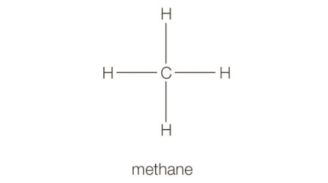
微生物或使碳封存适得其反
Extreme Life-Forms Could Complicate Carbon Sequestration
微生物或使碳封存适得其反
Researchers say carbon storage sites should be tested for microbial life, which could potentially convert CO2 to methane—a more potent greenhouse gas. Christopher Intagliata reports.
研究人员称,碳封存地点应进行微生物群落分析,因为微生物可以将二氧化碳转化为甲烷,而甲烷是更强的温室气体。
撰文 克里斯托弗·因塔利亚塔
翻译 Meatle
审校 邰伦玥
The first life on Earth appeared about four billion years ago. One place these pioneering organisms may have emerged is at hydrothermal vents, deep underwater. Where unusual chemistry provided energy for primitive life-forms to survive. Life-forms like the methane-belching microbes found at the vents today.
大约40亿年前,地球上首次出现了生命。其中一个孕育了这些先行者的地方,可能是深海中的热喷井。这些喷井所带出的不常见的化合物为原始的生命提供了了生存所需的能量。现今我们仍然能够在这些喷井中找到释出甲烷的微生物。
Now, for the first time, researchers have found evidence of methane-producing life in similarly extreme conditions, but at the surface of the Earth—at a spring in northern California, called The Cedars. The water there is extremely basic—with a pH of 11.6. And it contains no oxygen. Not an easy place to survive.
现在,研究人员首次在类似的极端环境中找到这些甲烷制造者的踪迹,但这次是在地球的表面——在加利福利亚北部的一个被称为雪松山泉(The Cedars)的地方。那里的水碱性很强:它的pH为11.6且不含氧气,在这种环境中活下来绝非易事。
Researchers tested water and sediment at the Cedars. Some samples got dosed with mercuric chloride to kill any life present. Those dosed samples produced no methane. But the samples in which microbes were allowed to survive did put out methane. Confirming that at least some of the methane at the springs is indeed biological in origin. The findings appear in theJournal of Geophysical Research: Biogeosciences. [Lukas Kohl et al., Exploring the metabolic potential of microbial communities in ultra-basic, reducing springs at The Cedars, CA, USA: Experimental evidence of microbial methanogenesis and heterotrophic acetogenesis]
研究人员分析了雪松山泉的水体以及沉淀物。部分样本在氯化汞中浸泡过,足矣杀死样本中的任何生物。这些浸泡过的样本没有释放出任何甲烷。然而,那些微生物可以生存的样本确实释出了甲烷。证明了在这些泉水中的甲烷至少有一部分确实来自生物反应。该项研究发表在《地球物理学研究杂志:生物地理学分刊》(Journal of Geophysical Research: Biogeosciences)。
The finding has implications for climate change alleviation. A geologically similar spring in Oman has been proposed as a site for carbon storage—pumping CO2 underground, where it gets incorporated in stone. But the extremophiles at The Cedars can use CO2 to make methane—an even more potent greenhouse gas. "So imagine pumping CO2 into the ground and having it come back up as methane." Penny Morrill, a biogeochemist at Memorial University of Newfoundland. "This will not necessarily happen, but it is something to be tested for before fully implementing a carbon capture and storage technology at one of these types of sites."
该研究对缓解气候变化有所帮助。在阿曼,一个地质学上与雪松山泉类似的地方被选用做作碳储藏。碳储藏是将二氧化碳打进地底,使之困在岩石之间的技术。然而,雪松山泉中的极端微生物能够将二氧化碳转化为甲烷,也就是将一种温室气体转化为更为强力的温室气体。“想像一下将二氧化碳打进地底而这些二氧化碳却变为甲烷返回地面。”佩妮·莫里尔(Penny Morrill),来自纽芬兰纪念大学(Memorial University of Newfoundland)的生物地理学家,“尽管这样的状况并不是必然会发生的,但应该经这些类似的地理结构被选为碳采集和封存的地点之前做好充分的测试。”
Morrill says the study's also a reminder that life is tenacious. "We should not let our biases prevent us from looking for evidence of life in what we would otherwise consider an unexpected place." Including other planets and moons.
莫里尔说该研究也提醒我们注意到生命的顽强。“我们不应使偏见阻止我们去寻找生命的踪迹,即使是在那些我们认为绝不会认为适合生物生存的地方。”包括其他的行星和卫星。
未经书面许可任何人不得复制或镜像
京ICP备11000850号-1
 京公网安备11010502039775号
京公网安备11010502039775号 信息网络传播视听节目许可证0111611号
国家科技基础条件平台

















